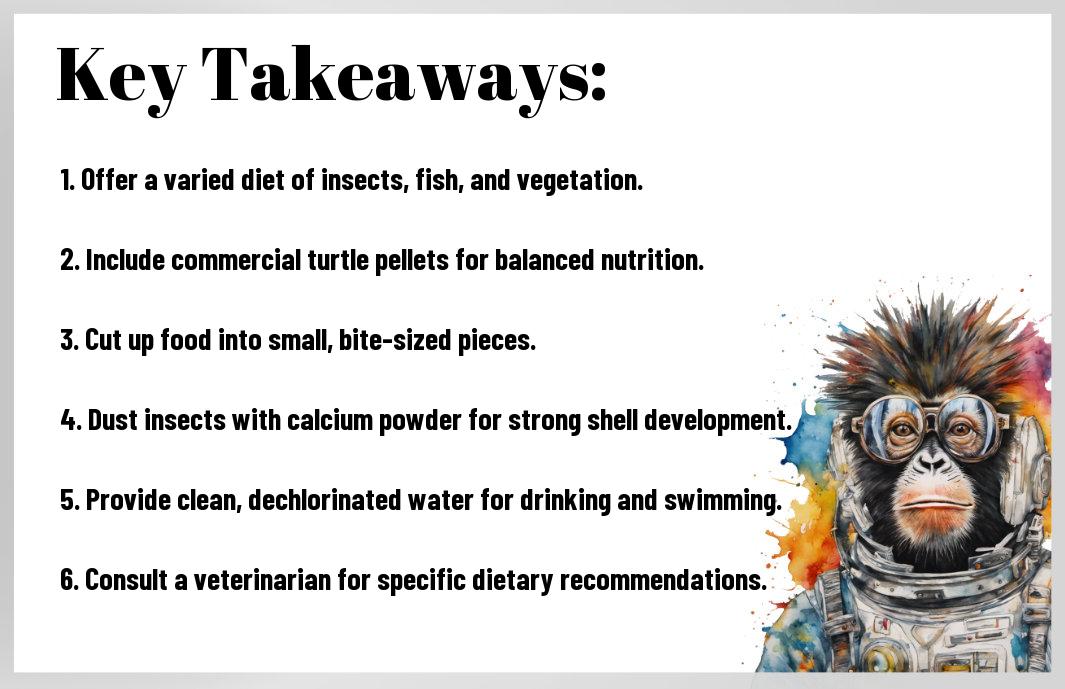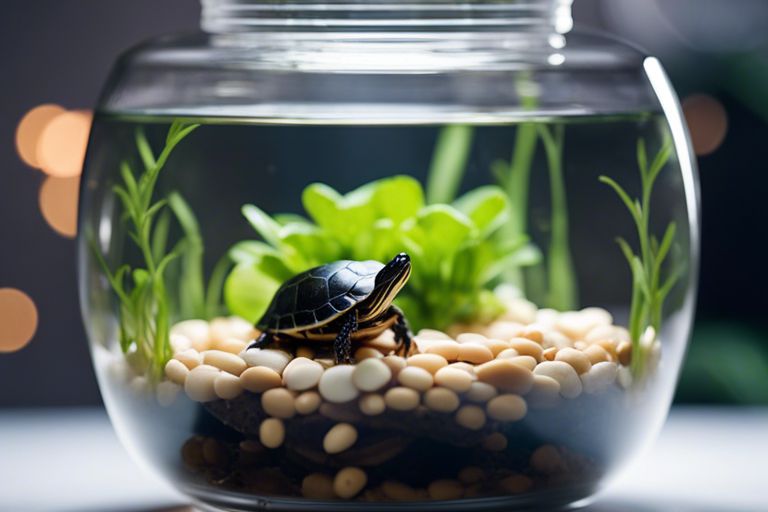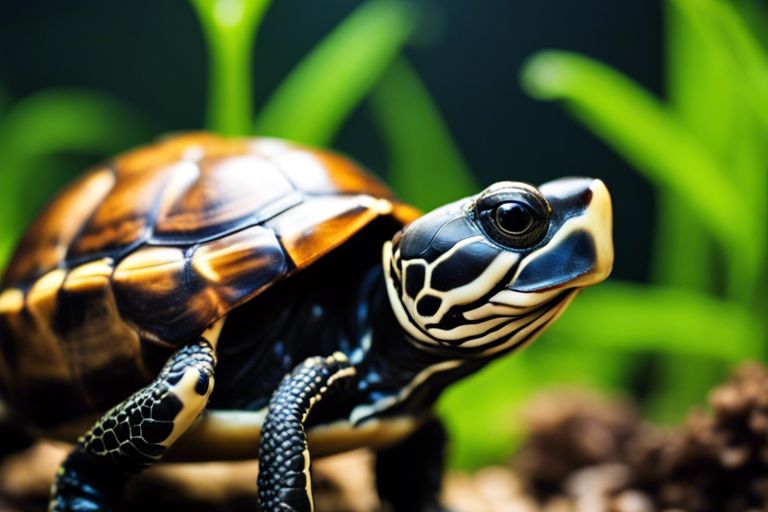This comprehensive guide will provide you with all the essential information on what to feed a baby painted turtle to ensure its optimal health and growth. Proper nutrition is crucial for the well-being of your baby painted turtle, and it is essential to provide a balanced diet to meet its specific dietary requirements. By following the guidelines outlined in this post, you will learn the best foods to offer to your baby painted turtle, as well as what to avoid to prevent any health issues. Whether you are a new turtle owner or looking to enhance your knowledge on turtle care, this article is a must-read for providing your baby painted turtle with the nutrition it needs.
Key Takeaways:
- Commercial turtle pellets: These provide a well-balanced diet for baby painted turtles, ensuring they receive all necessary nutrients.
- Fresh vegetables: Offer a variety of leafy greens and vegetables such as kale, spinach, and carrots to supplement the diet and provide essential vitamins and fiber.
- Occasional protein: Include small amounts of protein like mealworms, crickets, or cooked poultry to meet the baby turtle’s dietary needs.

Natural Diet of Baby Painted Turtles
While caring for a baby painted turtle, it is essential to understand their natural diet in order to provide them with the proper nutrition for optimal health and growth. Baby painted turtles, like their adult counterparts, are omnivores and have a diverse diet in the wild.
Foods in the Wild Habitat
Diet: In their natural habitat, baby painted turtles feed on a variety of foods, including insects, small fish, aquatic plants, and algae. These turtles are opportunistic feeders and will consume whatever is available in their environment. They have a keen sense of smell and vision, enabling them to locate their prey easily.
One: Baby painted turtles need a diet that is rich in protein and calcium to support their rapid growth and development. Insects such as crickets, mealworms, and small fish should be included in their diet to meet their nutritional requirements.
Mimicking a Natural Diet in Captivity
Foods: To mimic a natural diet for baby painted turtles in captivity, a combination of commercial turtle pellets, live insects, leafy greens, and aquatic plants can be offered. It is essential to provide a balanced diet that includes both animal and plant-based foods to ensure their nutritional needs are met.
A: Variety in their diet is key to keeping baby painted turtles healthy and thriving in captivity. Offering a mix of protein sources, such as insects and small fish, along with leafy greens like kale and dandelion greens, will help replicate their natural dietary preferences and provide essential nutrients for their overall well-being.

Commercial Foods for Baby Painted Turtles
Unlike homemade diets, commercial foods for baby painted turtles are specifically formulated to provide the essential nutrients these young reptiles need for proper growth and development. These commercially available turtle foods come in a variety of forms such as pellets, sticks, and dehydrated treats, making it easy for turtle owners to feed their pets a well-balanced diet.
Types of Commercial Turtle Food
When it comes to choosing commercial food for your baby painted turtle, there are a few different options to consider. Some of the most common types of commercial turtle food include pellets, sticks, and freeze-dried treats. Each type of food has its own benefits and can be used as part of a varied diet for your baby turtle. It is important to offer a mix of these foods to ensure your turtle is getting all the necessary nutrients.
| Pellets | Sticks |
| Formulated to provide a balanced diet | Easy for turtles to grab and eat |
| Can sink or float for different feeding preferences | May contain added vitamins and minerals |
| Can be messy and dirty the tank water | Some turtles may prefer this texture |
| Commonly recommended by veterinarians | Available in different flavors |
| Should make up the majority of the diet | Can be used as a special treat |
- Freeze-dried treats: These are a great way to add variety to your turtle’s diet, but should not make up the bulk of their food intake.
- Dehydrated snacks: These can be a good option for baby turtles who prefer a different texture in their food.
Perceiving your baby painted turtle’s preferences and adjusting their diet accordingly can help ensure they are getting a well-rounded and nutritious diet.
How to Choose Quality Turtle Food
Commercial turtle food can vary greatly in terms of quality and nutritional content. When selecting a commercial food for your baby painted turtle, it is important to look for options that are specifically formulated for young turtles. These foods typically contain higher levels of protein and essential vitamins and minerals needed for growth.
With so many options on the market, it can be overwhelming to choose the right commercial food for your baby painted turtle. It is essential to do your research and read reviews to ensure you are providing the best possible diet for your pet. Look for foods that are recommended by experienced turtle owners and veterinarians to ensure your turtle is getting the nutrition it needs.
Feeding Schedules and Quantities
How Often to Feed a Baby Painted Turtle
Not sure how often to feed your baby painted turtle? The frequency of feeding will depend on the age of the turtle. For the first six months, you should aim to feed your baby painted turtle every day to promote healthy growth and development. As the turtle grows, you can start feeding every other day.
It is important to monitor the growth and activity level of your baby painted turtle to determine the appropriate feeding schedule. Overfeeding can lead to obesity and health issues, while underfeeding can result in malnutrition and stunted growth. Observe your turtle’s behavior and adjust the feeding schedule accordingly to ensure it is getting the right amount of food.
Appropriate Portion Sizes
Turtle owners often wonder about the appropriate portion sizes for their baby painted turtles. Feeding the right amount is essential for the overall health and well-being of your pet. As a general guideline, offer a portion of food that is roughly the size of the turtle’s head.
It is better to underfeed than to overfeed your baby painted turtle. Overfeeding can lead to obesity and associated health problems. Avoid feeding your turtle more than it can consume in a few minutes. Monitor your turtle’s growth and adjust portion sizes accordingly to ensure it is growing at a healthy rate.
Supplements and Vitamins
The Role of Calcium and Vitamin D3
Keep in mind that calcium and vitamin D3 are essential for the growth and development of a baby painted turtle. Calcium is crucial for maintaining healthy bones and shell development, while vitamin D3 aids in the absorption of calcium. Without a proper balance of these nutrients, your turtle may be at risk for metabolic bone disease, a debilitating condition that can impact their overall health.
An inadequate amount of calcium in the diet can lead to soft shell or other skeletal abnormalities in painted turtles. It’s important to provide a calcium source such as cuttlebone or calcium powder dusted on their food to ensure they are receiving an adequate amount. Additionally, exposure to UVB light is crucial for the synthesis of vitamin D3, so make sure your turtle has access to natural sunlight or a UVB light source in their enclosure.
Additional Supplements for Optimal Health
The addition of a multivitamin supplement can further support your baby painted turtle’s overall health. These supplements can provide a range of essential vitamins and minerals that may be lacking in their diet. Look for a reptile-specific multivitamin to ensure it meets the specific needs of your turtle.
A healthy diet is the foundation of your turtle’s well-being, but supplements can help fill any nutritional gaps and ensure they are getting everything they need to thrive. However, it’s important not to overdo it with supplements, as too much of certain nutrients can be harmful. Consult with a reptile veterinarian to determine the best supplementation regimen for your baby painted turtle.
Common Feeding Mistakes
Feeding a baby painted turtle can be a rewarding experience, but it’s important to be mindful of common feeding mistakes that can impact the health of your pet. By being aware of these pitfalls, you can ensure that your turtle is getting the proper nutrition it needs to thrive.
Foods to Avoid
With so many options available, it can be tempting to offer a variety of foods to your baby painted turtle. However, there are some foods that should be avoided at all costs. These include processed foods, high-fat foods, sugary foods, and human snacks. Additionally, certain fruits and vegetables can be harmful to turtles, such as rhubarb, avocado, and citrus fruits. It’s important to do your research and stick to a diet that is specifically designed for baby painted turtles.
Another common feeding mistake is offering foods that are too large for your baby turtle to consume. Large pieces of food can be difficult for them to swallow and digest, leading to potential health issues. It’s important to cut up food into small, bite-sized pieces that are easy for your turtle to eat.
Overfeeding Issues
Avoid overfeeding your baby painted turtle, as this can lead to serious health problems. Overfeeding can cause obesity, shell deformities, and even organ damage. It’s important to follow a feeding schedule and portion control to ensure that your turtle is getting the right amount of food. Consult with a vet or a reptile specialist to determine the appropriate feeding schedule for your baby painted turtle.
Overfeeding can also lead to water quality issues in your turtle’s habitat. Uneaten food can accumulate at the bottom of the tank, leading to bacterial growth and poor water conditions. By avoiding overfeeding and removing uneaten food promptly, you can help maintain a clean and healthy environment for your baby painted turtle.
To wrap up
Following this guide on what to feed a baby painted turtle will ensure you are providing them with a balanced and nutritious diet essential for their growth and development. Remember to prioritize live foods and dark leafy greens to meet their specific dietary requirements. By offering a varied diet, you are promoting their overall health and well-being. Always consult with a reptile veterinarian if you have any concerns or questions regarding your baby painted turtle’s diet.





Leave a Reply